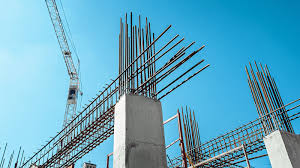When you walk into a building, cross a bridge, or drive through a tunnel, you probably don’t think twice about whether the structure will hold. That confidence comes from decades of engineering knowledge focused on one critical goal: creating structures that stand the test of time. This post explores the key factors that determine structural longevity, giving you insight into the science and art of building things that last.
Understanding Structural Integrity
Structural integrity refers to a building’s ability to withstand its intended load without experiencing failure, deformation, or collapse. Think of it as the structure’s immune system—when it’s strong, the building can handle stress, weather, and time. When it’s compromised, problems cascade quickly.
Several forces constantly test structural integrity:
Static loads include the weight of the building itself, furniture, and occupants. These forces remain relatively constant over time.
Dynamic loads come from wind, earthquakes, moving vehicles, or machinery. These forces change rapidly and can create stress patterns that static calculations don’t account for.
Environmental factors like temperature changes, moisture, and chemical exposure gradually weaken materials and connections.
Engineers design structures with safety factors built in, meaning they can handle loads well beyond normal use. However, this buffer only works when every component—from foundation to roof—performs as intended.
The Mathematics of Durability
Modern structural engineering relies on precise calculations to predict how materials will behave under stress. Engineers use formulas that account for:
- Tensile strength: How much pulling force a material can handle
- Compressive strength: How much squeezing force it can withstand
- Shear strength: Resistance to forces that try to slide materials apart
- Fatigue resistance: How materials perform under repeated stress cycles
These calculations help engineers choose appropriate materials and design connections that distribute forces effectively throughout the structure.
The Role of Materials
Material selection often determines whether a structure survives decades or centuries. Each material brings unique strengths and weaknesses that must align with the structure’s intended use and environment.
Steel: The Versatile Backbone
Steel offers exceptional strength-to-weight ratios and flexibility, making it ideal for tall buildings and long spans. Its ability to bend without breaking helps structures survive earthquakes and strong winds. However, steel requires protection from corrosion, which can significantly reduce its lifespan.
Quality control in steel production affects long-term performance. Professional wire straightening services ensure steel components meet precise specifications, eliminating weak points that could compromise the entire structure.
Concrete: Strength in Compression
Concrete excels at handling compressive forces and provides excellent fire resistance. When properly mixed and cured, concrete can last centuries. The key lies in achieving the right water-to-cement ratio and ensuring complete curing.
Modern concrete often includes additives that improve specific properties:
- Fly ash increases durability and reduces permeability
- Silica fume creates denser, stronger concrete
- Superplasticizers improve workability without adding water
Masonry: Time-Tested Durability
Stone and brick structures have proven their longevity over millennia. Ancient Roman buildings still stand because builders understood how to work with the natural properties of these materials. Quality masonry relies on proper mortar composition and skilled craftsmanship.
Engineered Materials
Modern construction increasingly uses engineered materials like laminated timber, fiber-reinforced polymers, and composite materials. These materials offer specific advantages but require careful consideration of long-term performance data.
Importance of Design
Even the best materials fail without proper design. Structural design involves more than calculating loads—it requires understanding how forces flow through the building and creating clear paths for those forces to reach the foundation.
Load Distribution
Effective structural design distributes loads evenly across the building’s framework. This prevents stress concentrations that could cause failure. Key design principles include:
Redundancy: Multiple load paths ensure that if one component fails, others can carry the load. This principle explains why many bridges have more support beams than calculations strictly require.
Continuity: Smooth transitions between structural elements prevent stress concentrations. Sharp corners and abrupt changes in cross-section create weak points.
Proportion: Properly sized members ensure that materials operate within their safe stress ranges. Oversized members waste resources, while undersized ones risk failure.
Seismic and Wind Resistance
Buildings in earthquake-prone areas require special design considerations. Base isolation systems, moment frames, and damping devices help structures absorb and dissipate seismic energy. Similarly, wind-resistant design considers factors like building shape, surface texture, and dynamic response.
Thermal Considerations
Temperature changes cause materials to expand and contract. Designers must account for these movements to prevent cracking and connection failures. Expansion joints, flexible connections, and material selection help accommodate thermal stresses.
Foundation Matters
The foundation supports everything above it, making it the most critical component of structural longevity. Foundation failure often results from inadequate soil investigation or poor construction practices.
Soil Investigation
Understanding soil conditions determines appropriate foundation design. Engineers analyze:
- Bearing capacity: How much weight the soil can support
- Settlement characteristics: How much and how quickly the soil will compress
- Groundwater conditions: How water affects soil stability
- Seasonal changes: How freeze-thaw cycles or drought affect soil volume
Foundation Types
Different soil conditions require different foundation approaches:
Shallow foundations work well in competent soils close to the surface. These include spread footings, strip foundations, and mat foundations.
Deep foundations transfer loads to stronger soil layers or bedrock. Piles, caissons, and drilled shafts fall into this category.
Specialized foundations address challenging conditions like expansive clays, soft soils, or high water tables.
Waterproofing and Drainage
Water is the foundation’s biggest enemy. Proper waterproofing and drainage systems prevent water damage that could compromise structural integrity. This includes:
- Waterproof membranes on foundation walls
- Drainage systems to direct water away from foundations
- Proper grading to prevent water accumulation
- Vapor barriers to control moisture migration
Regular Inspections and Maintenance
Even perfectly designed and constructed buildings require ongoing maintenance to achieve their full lifespan potential. Regular inspections identify problems before they become critical.
Inspection Schedules
Different building components require different inspection frequencies:
Annual inspections should cover roofing, drainage systems, and exterior envelope elements. These components face constant environmental exposure.
Periodic inspections every 3-5 years should examine structural elements, mechanical systems, and building envelope performance.
Detailed inspections every 10-15 years should include a thorough evaluation of all structural components, often requiring specialized equipment and expertise.
Common Maintenance Issues
Understanding common failure modes helps prioritize maintenance efforts:
Corrosion protection: Regular inspection and maintenance of protective coatings prevent steel corrosion that weakens structural elements.
Concrete repair: Addressing cracks and spalling before they allow water penetration prevents reinforcement corrosion.
Joint maintenance: Keeping expansion joints and sealants in good condition prevents water infiltration and accommodates building movement.
Drainage maintenance: Ensuring proper drainage prevents water damage that could compromise structural integrity.
Documentation and Records
Maintaining detailed records of inspections, repairs, and modifications helps track building performance over time. This information proves invaluable for planning future maintenance and understanding long-term trends.
Conclusion
Building structures that last requires combining disciplines and focusing on long-term performance over short-term savings. Durable buildings come from careful planning, quality materials, skilled construction, and regular maintenance. Investing in quality pays off with lower maintenance costs, longer service life, and the satisfaction of creating something built to endure.


